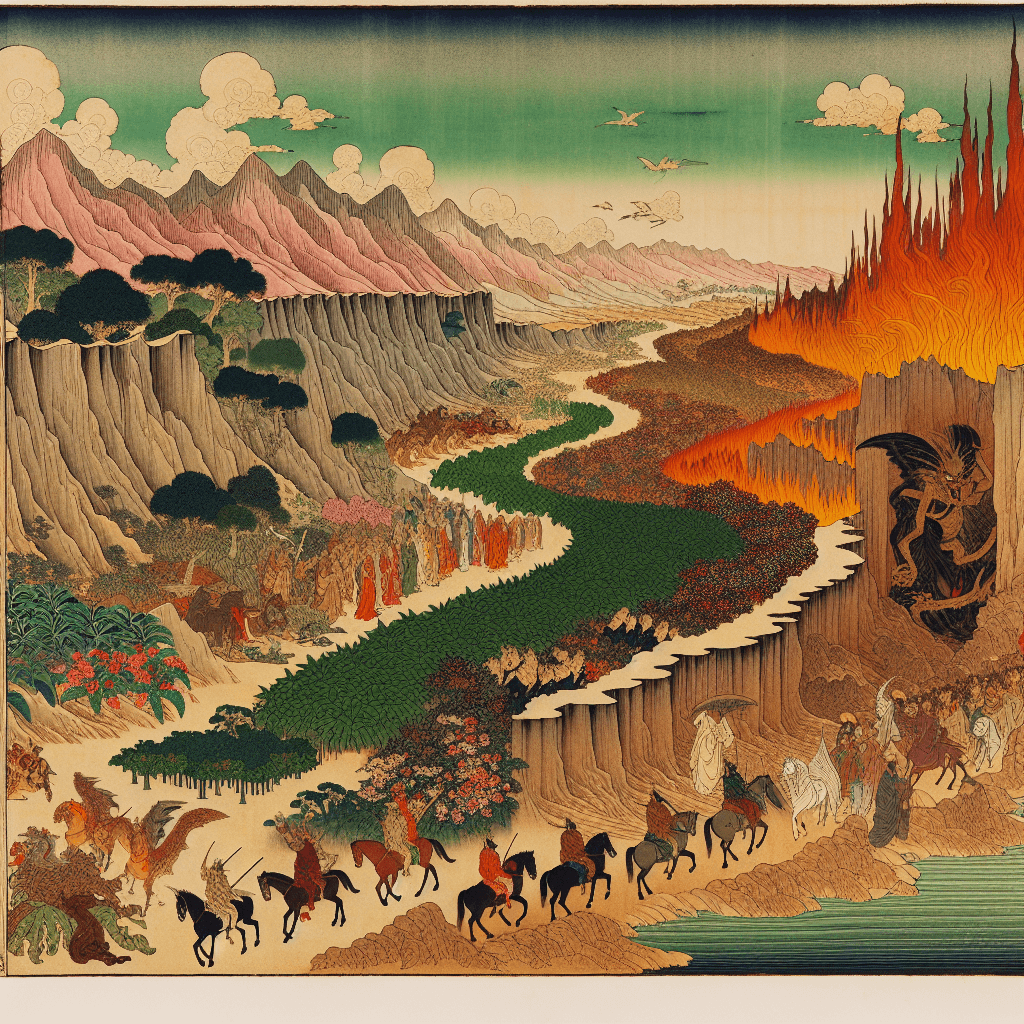The title of the blog post is "Jewish Tradition and the Threshold of Gehinnom: A Deeper Exploration.
syndu | Feb. 15, 2025, 5:26 a.m.

Christian and Islamic Perspectives: The Legacy of Gehenna and the Valley of Hinnom
The Valley of Hinnom, known in Hebrew as Gei Hinnom, is a geographical and spiritual landmark just outside Jerusalem steeped in rich historical and religious significance. Over the centuries, this valley has been entwined with profound theological concepts across Christian and Islamic traditions, primarily through the legacy of Gehenna. In this article, we explore how these traditions have interpreted Gehenna as a potent symbol of divine judgment and moral accountability.
Christian References: From Hinnom to Hell
In Christian theology, the term Gehenna is prominently used to symbolize the ultimate consequence of sin. Taken from the historical Valley of Hinnom, Gehenna is referenced throughout the New Testament, often in the teachings of Jesus Christ. This valley provides a backdrop for the vivid imagery of punishment and repentance, formed through the Greek translation of the Hebrew Bible.
The Gospels, particularly those of Matthew and Mark, describe Gehenna as a place of perpetual fire—a metaphor for the torments awaiting the unrepentant. Matthew 5:22 states, "But I say to you that everyone who is angry with his brother will be liable to judgment; whoever insults his brother will be liable to the council; and whoever says, 'You fool!' will be liable to the hell of fire." This use of Gehenna emphasizes the severe consequences of unrighteousness and the need for sincere repentance.
Gehenna in Christian thought serves not only as a warning of future punishment but also as a call to moral integrity. Religious teachings emphasize repentance and faith as pathways to redemption, compelling believers to align with divine commandments in anticipation of judgment.
Islamic Insights: Jahannam and its Roots
In Islamic tradition, concepts paralleling Gehenna appear, reflecting a shared link to themes of divine justice and moral scrutiny. The Quran describes Jahannam—a term akin to Gehenna—as a fiery abyss intended for those who reject faith and persist in grave sins. Surah Al-Hijr (15:43-44) provides a vivid portrayal of divine retribution: "And indeed, Hell [Jahannam] is the promised place for them all. It has seven gates; for every gate is of them a portion designated."
The Quran places strong emphasis on ethical behavior and accountability, portraying Jahannam as a powerful deterrent against moral transgressions. These depictions serve to guide Muslims in adhering to a righteous path in accordance with divine law.
While Jahannam is formidable, Islamic teachings also emphasize Allah’s mercy and the domain of hope. True repentance and good deeds can lead to forgiveness, offering every soul a chance to avoid eternal punishment. The dynamic between warnings of hell and the prospect of divine grace reflects an integral balance in Islam’s moral landscape.
The Valley’s Multifaith Symbiosis
Through its transformation to Gehenna and Jahannam, the Valley of Hinnom embodies an intersection of doctrinal narratives across Christian and Islamic beliefs. By engaging similar motifs of sin, judgment, and redemption, these faiths enrich their eschatological traditions with shared symbols and aspirations—demonstrating that despite distinct doctrines, the human pursuit of moral alignment with divine imperatives crosses cultural and religious divides.
Conclusion
The Valley of Hinnom, through its historical and theological journey from biblical forewarnings to eschatological allegories, continues to serve as a reminder of the profound consequences of spiritual choices. Both Christian and Islamic interpretations of Gehenna reflect not only fearsome cautionary tales but also invitations for reflection, spiritual renewal, and ultimate alignment with divine goodness.
